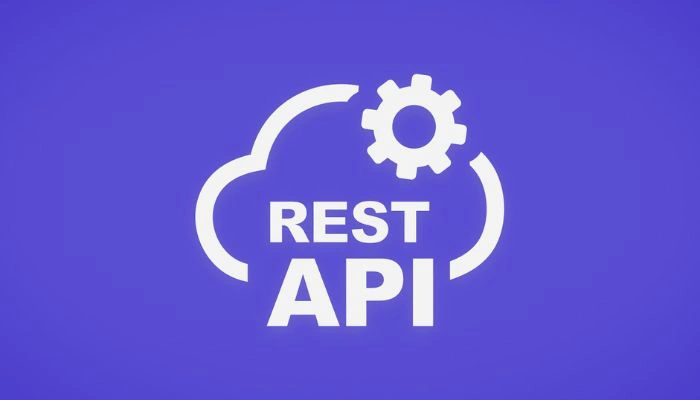DevSecOps The Future of DevOps Security
DevOps DevSecOps is a relatively new approach to software development that emphasizes the importance of integrating security into the entire development cycle, from planning to deployment. This approach has gained popularity in recent years as more organizations recognize the need to address security concerns early in the development process and not just as an afterthought.

The Importance of DevSecOps cannot be overstated. By integrating security into the development process, organizations can identify and address security vulnerabilities early in the development cycle, reducing the risk of security breaches and ensuring that products are more secure when they are released to the market. DevSecOps also promotes collaboration between development and security teams, which can lead to more effective security measures and a more streamlined development process overall.
Implementing DevSecOps requires a shift in mindset and a commitment to collaboration, automation, and continuous integration and delivery. Organizations must adopt a security-first mindset and prioritize security throughout the development cycle. They must also invest in the right tools and technologies to support DevSecOps, such as integrated development environments with security features and automated testing tools. Overcoming challenges in DevSecOps, such as resistance to change and a lack of security expertise, requires a strategic approach and a willingness to learn and adapt.
Key Takeaways
- DevSecOps emphasizes the importance of integrating security into the entire development cycle, from planning to deployment.
- Implementing DevSecOps requires a shift in mindset and a commitment to collaboration, automation, and continuous integration and delivery.
- Overcoming challenges in DevSecOps requires a strategic approach and a willingness to learn and adapt.
The Importance of DevSecOps

As software development continues to evolve and become more complex, the need for secure coding practices and cybersecurity measures has become increasingly important. DevOps has emerged as a methodology that prioritizes faster software delivery, higher software quality, and stronger communication between development and operations teams. However, despite its many benefits, DevOps suffers from some fundamental flaws when it comes to security.
This is where DevSecOps comes in. DevSecOps is the evolution of DevOps that embeds security into every aspect of the software development lifecycle. By integrating security into the development process from the very beginning, DevSecOps helps to identify and address security vulnerabilities early on, reducing the risk of security breaches and cyber attacks.
One of the key benefits of DevSecOps is that it enables continuous monitoring and analysis of security postures throughout the development process. This means that security vulnerabilities can be identified and addressed in real-time, rather than waiting until the end of the development cycle to conduct a security audit.
Another important aspect of DevSecOps is the shift-left approach, which involves moving security practices and controls further to the left of the development process. This means that security is integrated into the development process from the earliest stages, rather than being added as an afterthought. By doing this, DevSecOps helps to ensure that security is an integral part of the development process, rather than an optional add-on.
To achieve this, DevSecOps relies on a range of security tools and controls, such as access control, security testing, and secure coding practices. By using these tools and controls, developers can ensure that their code is secure from the outset, reducing the risk of vulnerabilities and cyber attacks.
In conclusion, DevSecOps is an essential methodology for any organization that wants to prioritize security in their software development process. By embedding security into every aspect of the development lifecycle, DevSecOps helps to identify and address vulnerabilities early on, reduce the risk of security breaches and cyber attacks, and ensure that security is an integral part of the development process.
Implementing DevSecOps

As I have learned, implementing DevSecOps involves integrating security into the entire software development and delivery process. This includes the pipeline, production, cloud, and speed and scale of the process. To achieve this, there are several strategies that can be employed.
One of the most important strategies is to implement a CI/CD pipeline that includes security checks. This ensures that security is integrated into the development process from the start and that any vulnerabilities are identified and addressed early on. Additionally, implementing infrastructure-as-code and configuration management tools can help ensure that security policies are consistently applied across the entire environment.
Another important strategy is to make security everyone's responsibility. This means that all members of the team are responsible for ensuring that security policies are followed and that any vulnerabilities are identified and addressed. Policies should be clearly defined and communicated to all team members to ensure that everyone is on the same page.
Containers can also be used to help ensure security. By containerizing applications, it becomes easier to manage and secure them, as well as to ensure that they are consistent across different environments. This can also help with compliance, as it ensures that the same policies are applied across all environments.
Integrated development environments (IDEs) can also be used to help ensure security. By integrating static code analysis and static application security testing tools into the IDE, developers can identify and address vulnerabilities as they write code. Additionally, pre-commit hooks can be used to ensure that code meets certain security standards before it is committed to the version control system.
Finally, open-source tools can be used to help ensure security. There are many open-source tools available for DevSecOps, including tools for unit testing, continuous deployment, and version control. By using these tools, teams can ensure that their processes are secure and that they are following best practices.
Overall, implementing DevSecOps requires a comprehensive approach that includes policies, tools, and a culture of security. By following best practices and making security everyone's responsibility, teams can ensure that their processes are secure and that they are delivering high-quality software at DevOps speed.
DevSecOps Tools and Technologies

As a DevOps engineer, I understand the importance of integrating security into the software development lifecycle. DevSecOps is a methodology that builds security into all aspects of the process. This involves using various tools and technologies that help address security issues from the start of the project.
Cloud-Based Tools
Cloud-based tools such as Microsoft Defender for Cloud and Azure Policy are essential for DevSecOps. Microsoft Defender for Cloud provides a unified view of security across all cloud workloads, while Azure Policy helps enforce compliance with corporate policies and industry regulations.
Container Technologies
Docker and Kubernetes are popular container technologies used in DevSecOps. Docker provides a secure way to package and deploy applications, while Kubernetes helps manage containerized applications at scale. By using these technologies, DevOps teams can ensure that their applications are secure and run smoothly in production.
Code Management and Analysis Tools
Code management and analysis tools such as OWASP Dependency-Check and OWASP ZAP are critical for DevSecOps. OWASP Dependency-Check helps identify vulnerable dependencies in the codebase, while OWASP ZAP is a web application security scanner that helps identify security vulnerabilities in web applications. By using these tools, DevOps teams can ensure that their applications are secure and free from vulnerabilities.
Ansible
Ansible is an open-source automation tool that can be used for configuration management, application deployment, and task automation. It is a popular choice for DevSecOps as it allows for the automation of security tasks such as patch management, compliance checks, and vulnerability scanning.
IT Security
IT security is an essential aspect of DevSecOps. By using cloud-based tools, container technologies, code management and analysis tools, and automation tools such as Ansible, DevOps teams can ensure that their applications are secure and free from vulnerabilities. It is important to follow best practices for cloud security, such as using secure connections and implementing access control measures.
In conclusion, DevSecOps is a methodology that builds security into all aspects of the process. By using various tools and technologies such as cloud-based tools, container technologies, code management and analysis tools, and automation tools such as Ansible, DevOps teams can ensure that their applications are secure and free from vulnerabilities.
Overcoming Challenges in DevSecOps

As with any new approach, DevSecOps implementation comes with its own set of challenges. In this section, I will discuss some of the common obstacles and solutions to overcome them.
Rapid Delivery vs. Security
A significant challenge in DevSecOps is balancing rapid software delivery with security. The pressure to deliver software quickly can often lead to security being an afterthought. This can result in expensive and time-consuming responses to cybersecurity attacks. To overcome this challenge, it is essential to integrate security into every stage of software development. This includes implementing security measures during the design phase, such as threat modeling, and using automated testing tools to identify and fix vulnerabilities early.
Third-Party Code
Another challenge is managing third-party code. Third-party code can introduce vulnerabilities into the software supply chain, making it difficult to ensure the security of the entire system. To mitigate this risk, it is essential to review and audit all third-party code before using it. Additionally, using static analysis tools can help identify potential vulnerabilities before the code is integrated into the system.
Cost-Effective Security
Implementing DevSecOps can be expensive, especially for smaller organizations. However, it is essential to remember that the cost of not implementing DevSecOps can be even higher. To make DevSecOps more cost-effective, it is important to use repeatable processes and automation wherever possible. This can help reduce the cost of fixing vulnerabilities and patching software.
Common Vulnerabilities and Exposures (CVE)
CVEs are a common challenge in DevSecOps. CVEs are publicly disclosed vulnerabilities that can be exploited by attackers. To mitigate this risk, it is essential to stay up-to-date on the latest CVEs and ensure that all software is reviewed and tested for these vulnerabilities.
In summary, DevSecOps implementation comes with its own set of challenges. However, by integrating security into every stage of software development, managing third-party code, using repeatable processes and automation, and staying up-to-date on the latest CVEs, organizations can overcome these challenges and deliver secure software.
Frequently Asked Questions

What is DevSecOps and how does it differ from DevOps?
DevSecOps is an extension of DevOps that emphasizes the importance of security in the software development process. While DevOps focuses on automating the software delivery process, DevSecOps integrates security into every phase of the development cycle, from design to deployment. This approach ensures that security vulnerabilities are identified and addressed early on, reducing the risk of breaches and cyber attacks.
What are the benefits of implementing DevSecOps practices?
Implementing DevSecOps practices offers several benefits, including improved security, faster time-to-market, increased collaboration between teams, and better overall quality of software. By integrating security into the development process, organizations can identify and address security issues earlier, reducing the risk of costly data breaches. Additionally, DevSecOps practices enable teams to work more efficiently, delivering software faster and with fewer errors.
What are some common security tools used in DevOps and DevSecOps?
There are several security tools that are commonly used in DevOps and DevSecOps, including vulnerability scanners, penetration testing tools, and security information and event management (SIEM) systems. Other tools include security automation and orchestration platforms, configuration management tools, and container security tools.
What are the top companies that have successfully implemented DevSecOps?
Several top companies have successfully implemented DevSecOps practices, including Netflix, Amazon, and Microsoft. These companies have demonstrated the benefits of integrating security into the development process, resulting in faster, more secure software delivery.
What are the key skills required for a DevSecOps Engineer?
DevSecOps Engineers require a combination of technical and soft skills. Technical skills include knowledge of security tools and techniques, as well as experience with software development and automation. Soft skills include strong communication, collaboration, and problem-solving abilities.
How can someone transition from a DevOps role to a DevSecOps role?
To transition from a DevOps role to a DevSecOps role, individuals must develop a strong understanding of security principles and practices. This can be achieved through training and certification programs, as well as by gaining hands-on experience with security tools and techniques. Additionally, individuals must be willing to collaborate closely with security teams and be able to communicate effectively with both technical and non-technical stakeholders.









